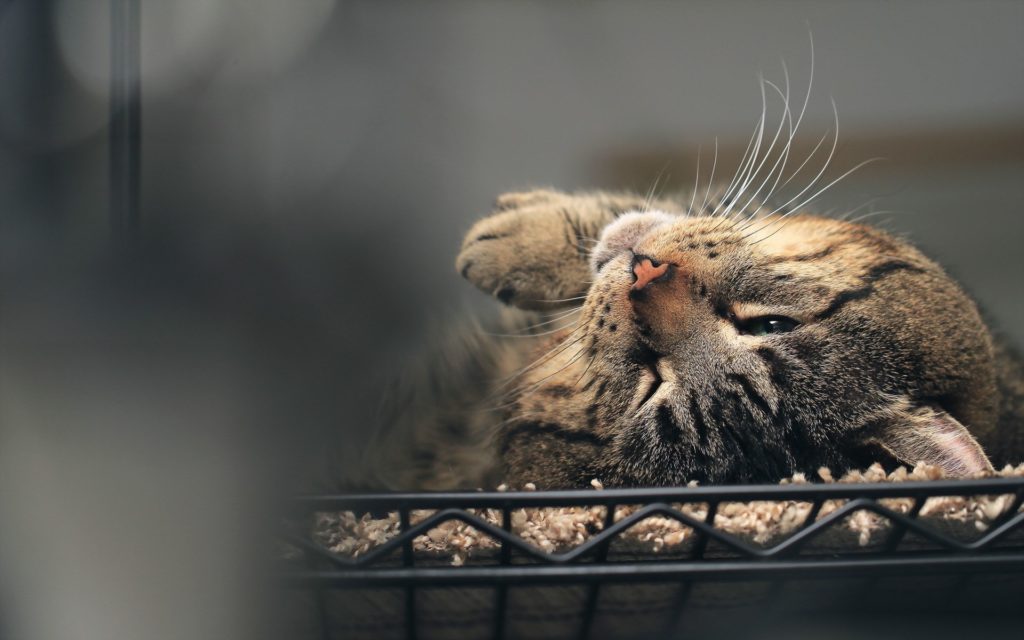Arthritis in cats is a frequent ailment that causes discomfort in the joints and makes mobility difficult. Although there is no treatment for cat arthritis, you can help your cat feel better. Schedule a meeting with your veterinarian straight away if you see your cat slowing down or displaying indications of pain when they move.
The bones in your cat’s body glide freely past one other, protected by healthy joint fluid and cartilage. The smooth surface of a cat’s joints gets worn away, and the bones grind against one other like sandpaper when it develops arthritis.
Arthritis can affect any part of a cat’s body, but the legs are particularly susceptible. Cat arthritis in the back legs can severely restrict your cat’s movement. Cat arthritis can cause lameness in certain cats, causing them to walk with a limp or favoring one leg. This often leads to the cat becoming considerably less active and spending more time napping.

Arthritis in cats is characterized by joint inflammation and, in certain cases, cartilage disintegration, which helps to reduce bone-on-bone wear and tear.
Table of Contents
Signs and Symptoms of Arthritis in Cats
Some of the signs to look out for in a cat concerning arthritis include
- Difficulty climbing or descending stairs
- Limping
- Leg stiffness especially after resting or sleeping
- Difficulty using their litter box
- Irritability
- Reduced levels of activity
- Less time spent grooming
- Reduced height when jumping
- Changes in grooming behavior
- Changes in sleeping patterns
- Changes in body posture
Causes of Arthritis in Cats
- The science of genetics. Arthritis is more common in some cat breeds. This is because their cartilage or hips have developed abnormally. Maine Coon, Persian, Scottish Fold, and Siamese cats are the most typically affected.
- Wear and tear is two of the most common causes of pain in cats. As the cat gets older, the joints may get weaker.
- Obesity is a problem. Obesity may aggravate pain, even though there is no scientific proof that it causes it.
- Cartilage surrounding joints may be affected by abnormal hip development.
- Arthritis can develop when a cat sustains a joint fracture or injury.

Treatment of Arthritis in Cats
Use of Medication: While giving prescriptions to your cat might be tricky, many prescription meds are available in liquid form, as well as flavored tablets or capsules. Injectable versions of several drugs are also available. Consult your veterinarian to determine the best course of action for you and your cat.
NSAIDs are the most popular treatment for feline arthritis, and they are recommended by a professional veterinarian who can assist establish the length and kind of treatment. In some circumstances, if non-steroidal anti-inflammatory medicines are neither appropriate nor adequate, cats will be given painkilling drugs.

Acupuncture Therapy: Although there has been researching on acupuncture for cat arthritis, some cats may benefit from it. Acupuncture is an ancient Chinese healing practice in which needles are inserted into specific points on the body to relieve pain.
Laser Treatment: Laser treatment is also an option. By employing light to deliver chemical messages to human tissues, laser treatment has anti-inflammatory benefits. This improves discomfort and is a treatment that most cats accept well.
Exercise: Exercising a cat may appear difficult, but many cats like playing with toys on a string, chasing a laser light, or even playing hide-and-seek with the incentive of locating their food in various locations throughout the home.
Dietary with supplementary: Dietary treatment may take many forms and is tailored to your cat’s specific needs. Some diets may cut calories drastically without leaving your cat hungry, while others will include extra vitamins in the food. Supplementing your cat’s diet with joint supplements might be beneficial.




